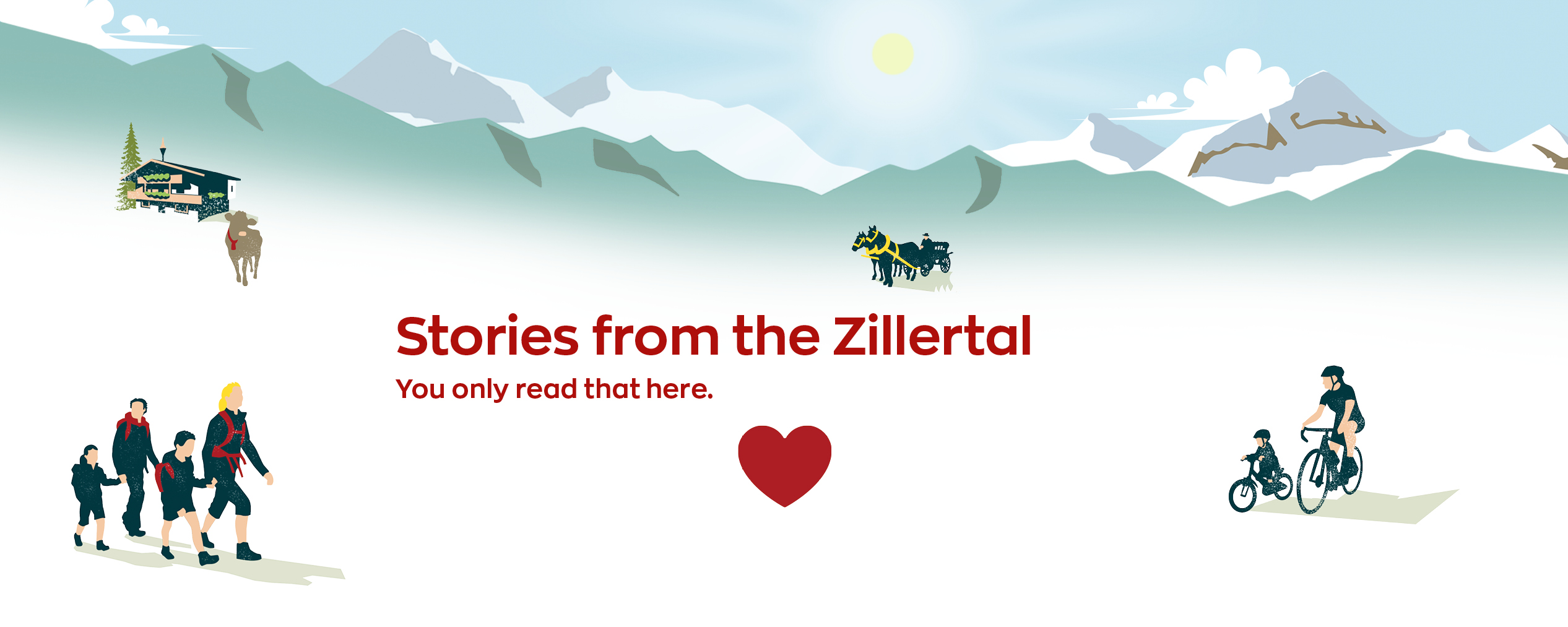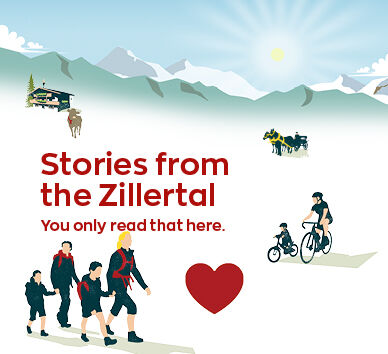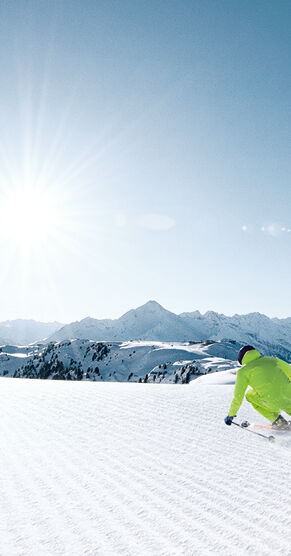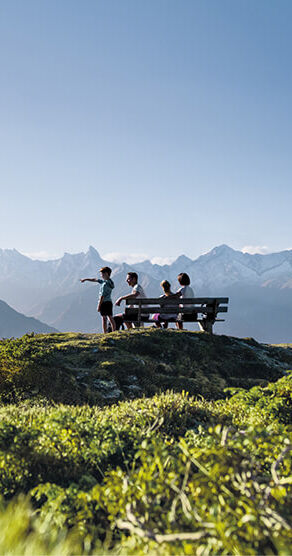
Stories from the Nature Park
Experiencing the nature park
Pride and stones
On the Loschbodenalm on the Tuxer Hauptkamm, the 150-year-old stone wall shines in new splendor and magically attracts not only hikers.
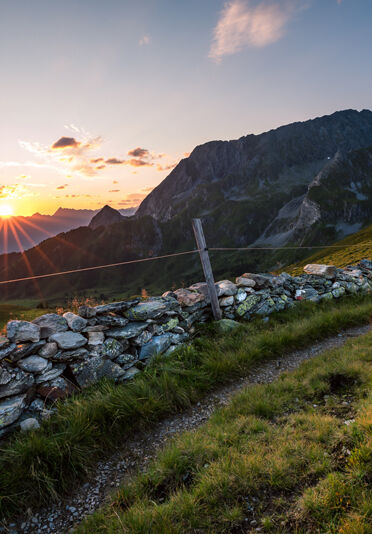
Cautiously, Larissa places one stone on top of the other. The student has already spent five summers as a volunteer on the alpine pastures in the Zillertal Alps, helping with projects such as the reconstruction of the old stone wall. “I find it relaxing,” she says. And: “It makes me proud to take part in such a beautiful, important project.” She then looks around for the next stone and positions it perfectly. The wall must be slightly tilted from the outside to the inside, and there shouldn’t be too many gaps. However, if they do appear, then Larissa fills them up with small stones and soil. “There’s a wise saying,” says Willi Seifert, managing director of the Nature Park Zillertal Alps, which pushed the project in cooperation with the Alpenverein. “If you turn a stone around four times, it will fit in anywhere.”
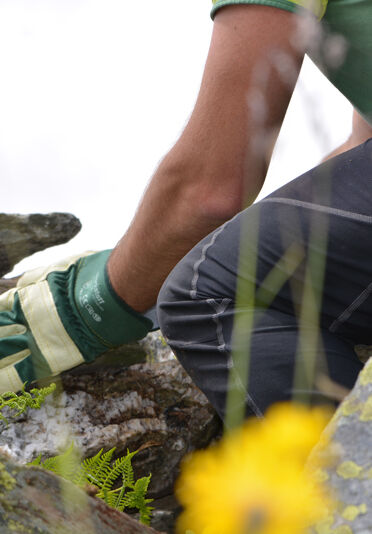
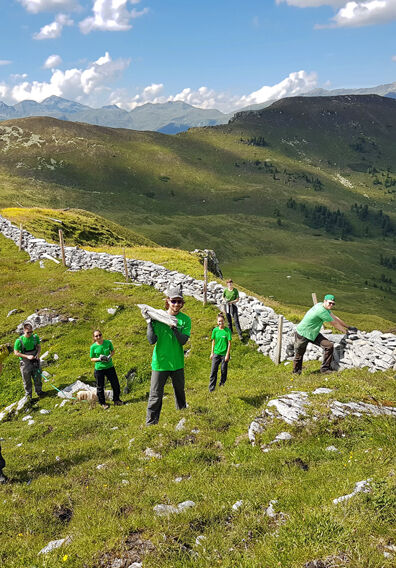
Hansi Hinterseer’s amazement
The Loschbodenalm, where the stone wall is, is located on the Tuxer Hauptkamm at an altitude of between 1,700 and 2,000 metres. It is a historical document and, as Seifert estimates, at least 150 years old. At that time it was only possible to build walls and buildings on alpine pastures by stone layering. Cement or slaked lime were expensive and the mountain pastures difficult to reach. Over the years, however, wind and weather have made the stone wall look older than it actually is. That’ s why its restoration was part of a three-year conservation plan starting in 2018. Even Hansi Hinterseer was here in Zillertal with a film crew to capture the quiet beauty for TV. “Quite remarkable,” he said, congratulating Seifert on the project.
“There’s something monumental about this wall”
Willi Seifert, CEO of the nature park
“There’s something monumental about this wall,” he says, looking proudly over the structure, which is about 60 centimeters high but imposing nonetheless. It winds through the landscape for about one kilometre and can be seen wonderfully from above from the “Flach”, the highest point in the vicinity at 2,248 meters. It is one of the longest dry stone walls in the Eastern Alps and separates the Loschbodenalm from the Elsalm.
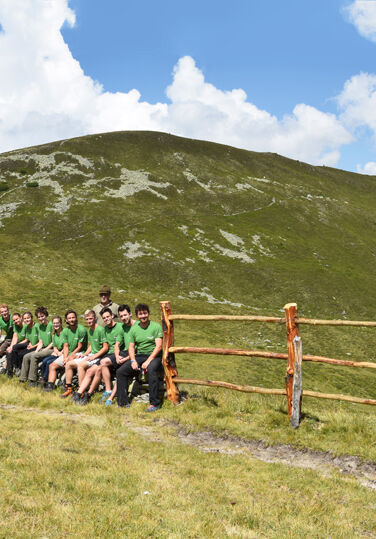
Its original purpose was to delineate a natural border between the alpine pastures of different owners. So the cows would know where their home was. And so it remains to this day. But hikers can find three narrow passages, and if you pause for a moment, you will discover a small world of its own. "Here it’s teeming,” Seifert says. Small rodents inhabit the wall along with various species of lizards. “We’ve even spotted Alpine newts, too.” On nice days, you can watch the reptiles sunbathing, and plants like sedum and houseleek also love the warm, dry spot. Spiders and other insects make themselves at home inside, where wonderfully cool shady spots can be found.
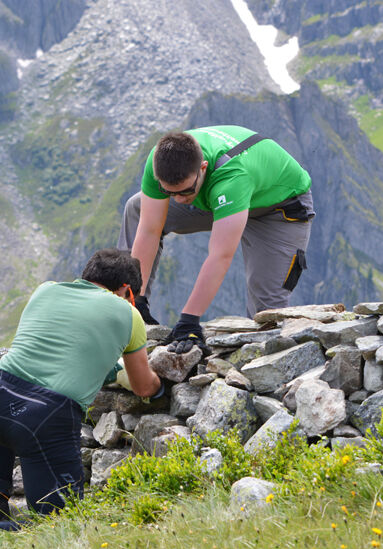
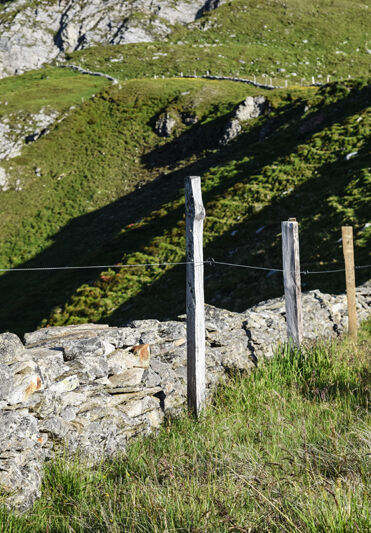
Seifert is pleased. “It’s a great feeling when you can preserve threatened habitats with a project.” And hikers don’t come up short on their tours either, when they walk along the stone wall on their way from the Höllensteinhütte to the Tettensjoch. The hut of the Erler family lies 400 meters below. Here, brothers Thomas and Michael prepare delicious Zillertal delicacies and serve their famous Kaiserschmarrn, which is available with fresh blueberries in summer. And when you spend the night at the hut, you’ll wake up the next morning with the gentle sounds of more than a hundred cow bells. The hut and the cows mean a lot of work for the brothers. They are all the more grateful to the volunteers who not only renovate the stone wall, but also de-stone pastures and clear them with loppers. “Otherwise, the pasture would become overgrown,” says Michael Erler. “We couldn’t manage to do this alone.” So it was only a matter of course for them to serve the helpers ample portions of Kaiserschmarrn – with fresh blueberries, of course.
Image: Thomas Pfister and text: Barbara Reiter
Zillertal magazine Summer 2022/23
Even more stories from the Zillertal

The electric world of e-biking
Anyone looking to explore Zillertal on an e-mountain bike is fully on trend! Fun and action are what it’s all about in the Zillertal Arena in the Zell-Gerlos holiday region.
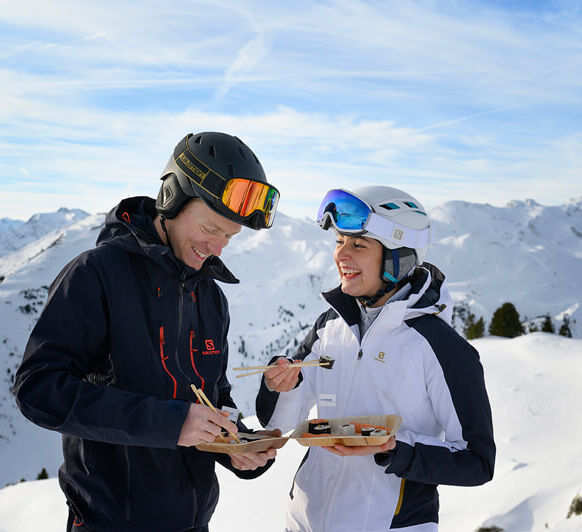
Gliding boldly into culinary delight
14 international culinary arts in 14 huts. The Ski Food Festival in Hochzillertal-Kaltenbach and at the Spieljoch in Fügen guarantees an unforgettable culinary experience.
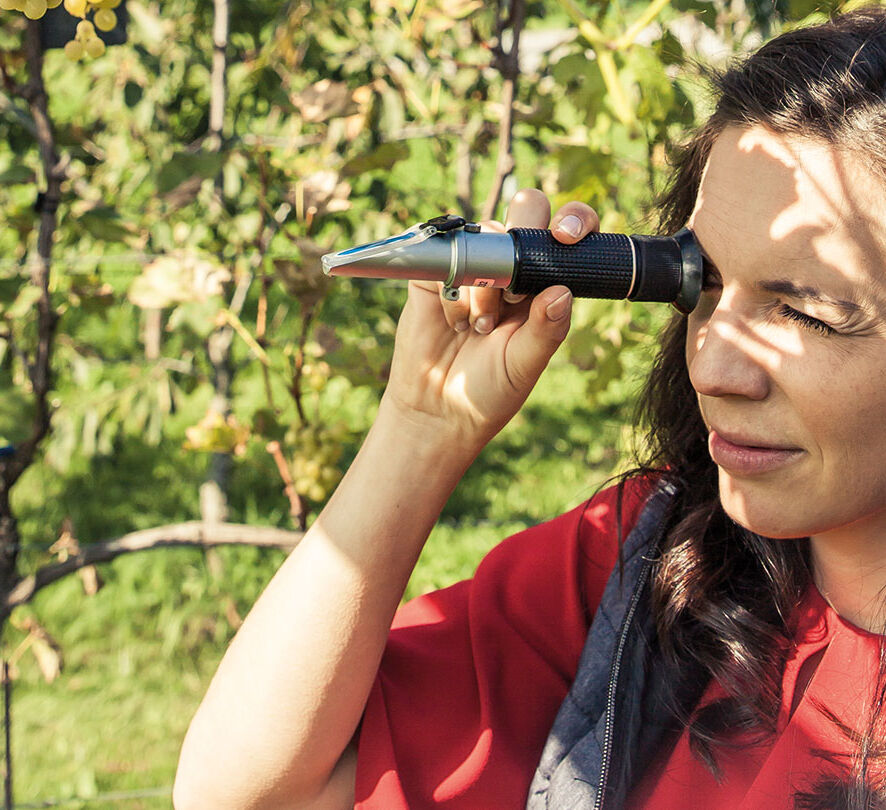
The rebellious vintner from Zillertal
Can you even grow wine in Zillertal? Despite other people’s doubts, Maria Pfister believed so, put it to the test and is now Zillertal’s only vintner – with her own wine tavern. A truly delectable story!
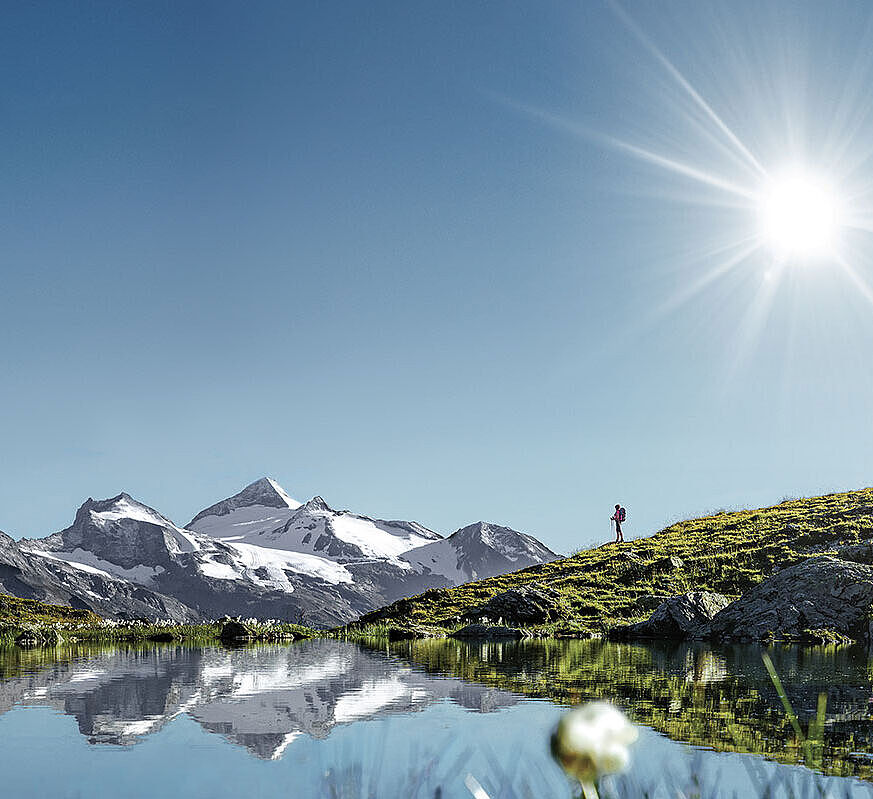
Zillertal
Welcome to Zillertal! Where sun, snow and well-being become the meaning of life and where great freedom tempts you to let go.
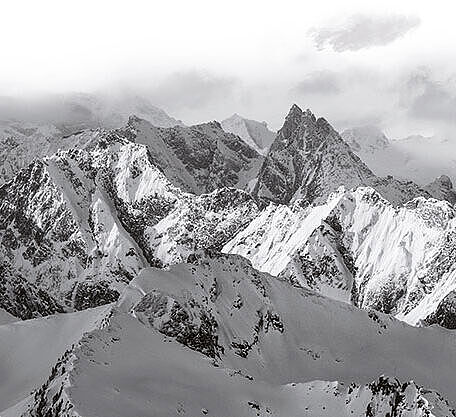
Zillertal Newsletter
Our newsletter provides you with great information about the Zillertal. Get the best seasonal tips, information from the ski resorts and about the summer mountain railways and much more.
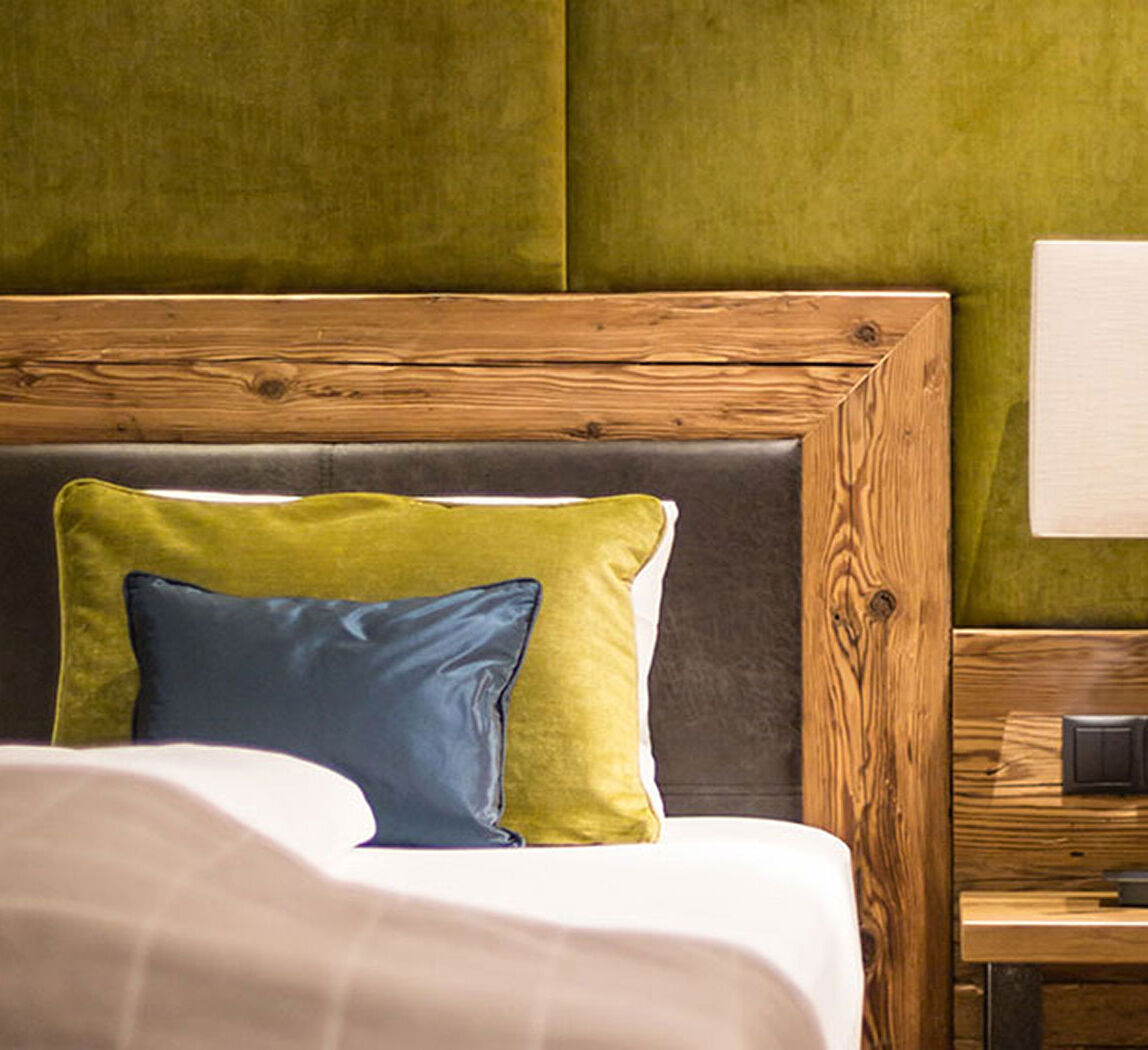
Hosts in Zillertal
Find the right accommodation for your perfect winter holiday in Zillertal – from cosy private rooms to luxury five-star hotels.

Getting to Zillertal
Zillertal is located in the west of Austria and is the widest of the side valleys on the south side of the Inntal Valley. Get to Zillertal safely and comfortably.
